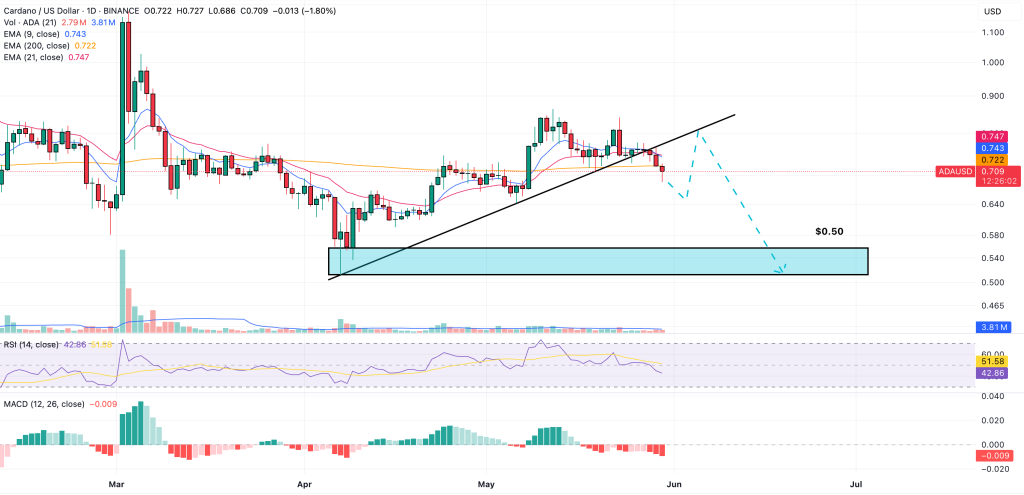Unlock the Editor’s Digest for free
Roula Khalaf, Editor of the FT, selects her favourite stories in this weekly newsletter.
The writer is co-author with Rohit Lamba of ‘Breaking the Mold: India’s Untraveled Path to Prosperity’ and former governor of India’s central bank
On June 4, democracy won in India, a victory conferred by a wise electorate. Prime Minister Narendra Modi’s increasingly authoritarian government did not secure a majority, and now needs the support of coalition partners to stay in power. The election bodes well economically and politically for the country.
Before the election, policy was determined by the prime minister’s office and the bureaucracy, then rubber-stamped by parliament, typically over the protests of the tiny opposition. A mix of carrots and sticks co-opted the mainstream media and business. Most worryingly, government agencies jailed two opposition chief ministers before the elections, and tax authorities froze the main opposition party’s bank accounts for minor past transgressions. With the ruling party dominating fundraising, and Modi projecting himself as India’s leader of destiny, the election seemed to be a walkover.
Fortunately, some institutions functioned reasonably independently. The supreme court unfroze the opposition’s bank accounts. The government-appointed election commission, though unwilling to call out Modi’s dog whistles, ensured some 650mn eligible citizens voted with little intimidation or fraud. Social media channels, some run by journalists squeezed out of their former jobs, attracted an audience tired of mainstream media bias.
Moreover, authoritarian government has a weakness — it does not allow, and therefore cannot react to, feedback. While the government trumpeted overall growth, it did not acknowledge the hardship to households from rising unemployment, especially of youths, and high food prices. Faltering consumption growth was dismissed as data aberrations. The election results may have shocked the government and mainstream press, which predicted an overwhelming victory for the Modi administration, but they did not surprise anyone with an ear to the ground.
Interestingly, reforms may pick up now. The Modi administration implemented a goods and services tax, inflation targeting and a bankruptcy code in its first term, but its cultural agenda dominated its second term. Agricultural reforms, passed without parliamentary consensus, were eventually withdrawn in the face of farmer protests.
Modi’s coalition partners and the much stronger opposition in parliament will, hopefully, prevent any unilateral policy measures. But reforms to land and labour laws, which need more consensus building, may be back on the table. A chastened government may also aim to make growth more job-intensive, improving the lot of households. If the government focuses on equipping youth with employable skills, and reviving small and medium enterprises in labour-intensive sectors, economic growth could become more inclusive even in the short run.
The government also needs to review its plans for manufacturing exports-led growth, based on protectionist tariffs and subsidies. The world does not have political or climatic room for another China-sized economy exporting manufactured goods. India has other options. It already accounts for about 5 per cent of global services exports (and less than 2 per cent of goods exports). Exports of high-skilled services, such as consulting, telemedicine and design and software embedded in manufacturing, can lead the way. That requires a shift in spending, for instance repurposing billions of dollars of subsidies from capital-intensive chip manufacturing to investments in quality childcare, schools and colleges. Service exports would also benefit from stronger data privacy laws, including protection from government intrusion — something a more democratic India could enact.
As the ruling party’s grip on power loosens, the mainstream media and bureaucracy will see more value in being impartial. Democratic consensus can replace government-imposed fiat. This bodes well for the 2026 reapportionment of parliamentary seats between the economically faster-growing west and south and the demographically faster-growing north and east. Democratic India will probably reach a decision that all its citizens can live with, not one that divides the country.
A more democratic India will be a more reliable friend to democracies around the world, even while its experience of colonialism gives it a different lens to that of the G7. India can be a bridge-builder in a fracturing world. This election, like that in Poland last year, shows authoritarianism can be halted. It also makes India more central to our collective future.
Credit: Source link










